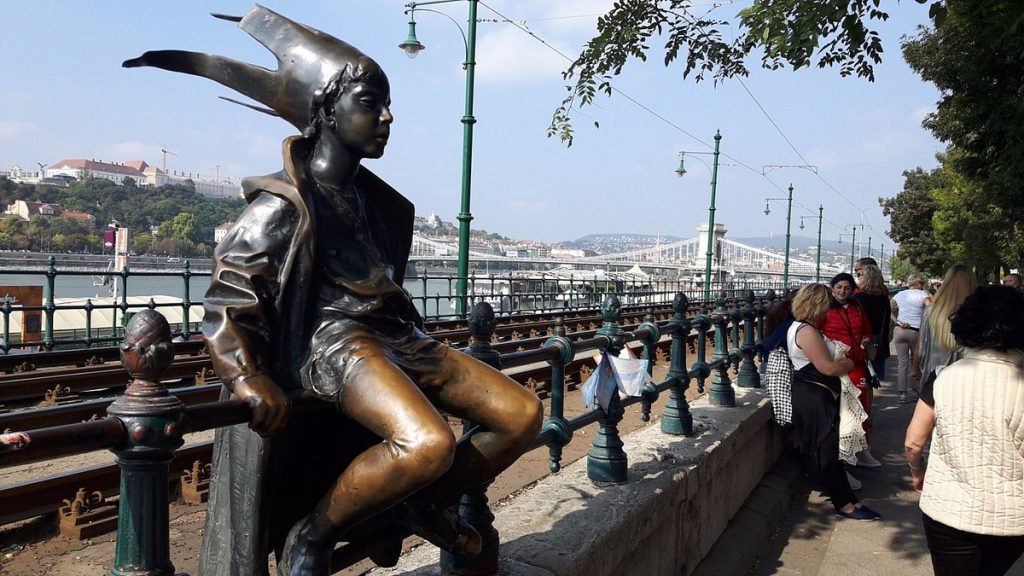Little Princess Statue: A Whimsical Icon of Budapest
Introduction
Discover the enchanting charm of Budapest at the Little Princess Statue, a whimsical symbol that captures the city’s fairy-tale allure. Nestled along the Danube promenade, this delightful statue embodies a sense of wonder and nostalgia, offering a perfect blend of art and fantasy.
The Story Behind the Statue
A Tribute to Youth and Imagination
The Little Princess Statue was created by Hungarian sculptor László Marton in 1989. Inspired by his daughter, who often played in a princess costume, Marton crafted the statue to capture the innocence and imagination of childhood. The statue has since become one of Budapest’s most beloved landmarks, symbolizing the city’s playful spirit and cultural richness.
Location and Setting
The statue is located on the picturesque Danube promenade, near the Vigadó Concert Hall and across from the iconic Buda Castle. Its position along the tram tracks of Line 2 makes it easily accessible and a delightful surprise for those strolling along the river. The backdrop of the flowing Danube and historic architecture adds to the statue’s enchanting atmosphere.
Artistic Details
Intricate Craftsmanship
The Little Princess Statue is a life-sized bronze sculpture depicting a young girl sitting on a rail, her legs dangling freely. She wears a whimsical crown made of newspaper, adding a touch of playfulness and creativity. The statue’s detailed craftsmanship, from the folds of her clothes to the expression on her face, captures a moment of pure, childlike wonder.
Symbolism and Interpretation
The statue embodies the spirit of youth and the power of imagination. Her serene gaze towards the river suggests a sense of curiosity and dreams. The crown symbolizes the capacity to find joy and adventure in everyday life, encouraging viewers to embrace their inner child and the magic of their surroundings.
A Popular Photo Spot
Capturing the Magic
The Little Princess Statue is a popular spot for photography enthusiasts and tourists. Its whimsical nature and picturesque location make it an ideal subject for capturing the essence of Budapest. Visitors often pose beside the statue, mimicking her playful stance or simply enjoying the serene ambiance.
Best Times to Visit
For the best photo opportunities, visit the statue early in the morning or late in the afternoon when the light is soft and the promenade is less crowded. The evening lights reflecting off the Danube also provide a magical backdrop for nighttime photography.
The Cultural Impact
A Beloved Landmark
Over the years, the Little Princess Statue has become a symbol of Budapest’s charm and artistic heritage. It is featured in countless travel guides, postcards, and photographs, representing the city’s unique blend of history, culture, and whimsy.
Inspiring Joy and Reflection
The statue’s presence on the bustling promenade invites both locals and tourists to pause and reflect on the simple joys of life. It serves as a reminder of the importance of imagination and the beauty found in everyday moments.
Conclusion
The Little Princess Statue isn’t just a statue; it’s a reminder of the magic that resides in everyday moments. Whether you’re a photography enthusiast, a lover of fairy tales, or simply a passerby captivated by its charm, this statue offers a chance to embrace the joy of discovery in the heart of Budapest. Visit the Little Princess Statue to experience the whimsical spirit of the city and let your imagination take flight along the beautiful Danube promenade.

